Explore the different types of NBA fouls and gain a deeper understanding of the game. From personal fouls to shooting fouls, technical fouls to flagrant fouls, we’ll dive into each sub-section to uncover the nuances and impact of these fouls. Get ready to discover the rules, strategies, and consequences behind some of the most common fouls in basketball.
Personal Fouls
Personal fouls in the NBA are common infractions that result in disadvantages for the team committing the foul. Here are some key points to understand about personal fouls:
- A personal foul occurs when a player makes illegal contact with an opponent. This can include pushing, holding, or tripping an opponent.
- Personal fouls can result in free throw opportunities for the opposing team. Depending on the situation, the opposing player may be awarded one or two free throws to score points without any defensive interference.
- Players who commit multiple personal fouls during a game may face disqualification. If a player accumulates a certain number of personal fouls, typically five, they are ejected from the game and cannot continue playing.
- Referees are responsible for making decisions regarding personal fouls during the game. They closely monitor the actions of the players and have the authority to penalize any illegal contact.
- Video review is sometimes used to assess the severity and accuracy of personal fouls. This allows referees to make more accurate judgments and ensures fair play.
- In some cases, the league may take disciplinary actions against players who repeatedly commit personal fouls, leading to fines or suspensions.
Understanding personal fouls in the NBA is crucial for players, coaches, and fans alike, as it provides insight into the rules and consequences of personal fouls on the basketball court. By being aware of the implications of personal fouls, teams can strategize and adjust their gameplay to avoid unnecessary penalties and maximize their chances of success.
Shooting Fouls
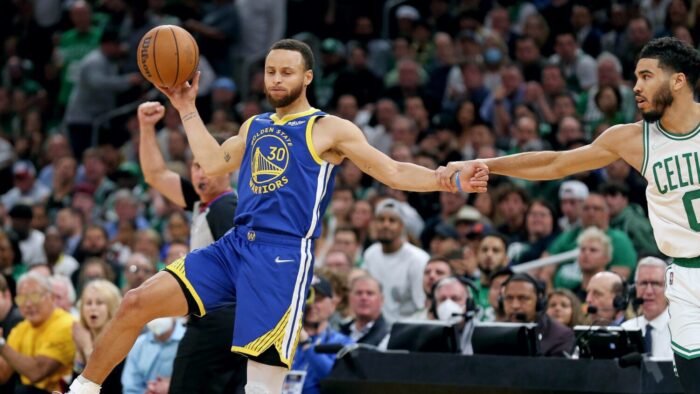
Source: nba.com
When it comes to NBA fouls, shooting fouls play a significant role in determining the outcome of a game. Here are some important details to know about shooting fouls:
- Shooting fouls occur when a defensive player makes contact with an offensive player who is in the act of shooting the ball.
- Shooting fouls, being a crucial aspect of the game, can result in the offensive player being awarded free throw opportunities.
- If a shooting foul occurs during a successful field goal attempt, the offensive player is awarded one free throw and the opportunity for an additional free throw if the first one is made.
- If a shooting foul occurs during an unsuccessful field goal attempt, the offensive player is awarded two or three free throws, depending on whether the shot was taken from inside or outside the three-point line.
- Shooting fouls can also create other consequences, such as accumulating team fouls or leading to players getting disqualified for excessive fouls.
Understanding shooting fouls is crucial for players, coaches, and fans to comprehend the dynamics of the game and the scoring opportunities that arise from these fouls.
In a historical context, shooting fouls have always been a part of basketball. They have evolved over time with rule changes and interpretations by referees. The introduction of the three-point line in the late 1970s added another dimension to shooting fouls, as players now had the chance to earn an extra point from the free throw line.
Throughout NBA history, players like Michael Jordan, Kobe Bryant, and James Harden have become masters at drawing shooting fouls and capitalizing on free throw opportunities, which can greatly impact the outcome of games. As the game continues to evolve, shooting fouls will remain a fundamental aspect of NBA basketball.
Technical Fouls
- Definition: Technical fouls are specific types of fouls that can occur in NBA games. These fouls are called for actions that are unsportsmanlike or disrespectful towards the game, the officials, or other players.
- Examples: Some actions that can result in technical fouls include arguing with referees, using profanity, showing excessive emotion, or making disrespectful gestures.
- Penalties: When technical fouls are called, the opposing team is awarded one free throw, and possession of the ball is given to the opposing team as well. The player who commits the technical foul also receives a personal foul in their individual statistics.
- Technical Foul Limit: In NBA games, players and coaches need to be aware of their technical foul count. If a player or coach accumulates a certain number of technical fouls throughout the season, they can face additional penalties, such as fines or suspensions.
- Disqualification: If a player or coach receives multiple technical fouls in a single game, they can be ejected from the game. This means they are removed from the game and must leave the playing area and bench area.
- Referee Decisions: Referees make the final call on technical fouls based on their judgment of the situation. Their decisions can impact the flow of the game and can sometimes lead to disagreements between players, coaches, and officials.
Understanding technical fouls is important for players, coaches, and fans of the NBA. It is crucial to respect the game and follow the rules to maintain fair play and sportsmanship.
Flagrant Fouls
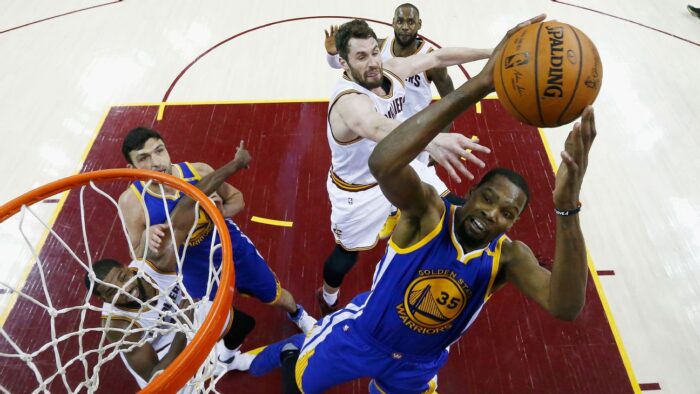
Source: espn.com
Flagrant fouls in the NBA are serious infractions that can result in significant consequences for the player committing the foul. Here is a list to provide a better understanding of flagrant fouls:
- Flagrant fouls are intentional acts committed by a player that involve excessive or unnecessary contact.
- These fouls are typically more aggressive and dangerous than other types of fouls.
- Flagrant fouls can result in the player being ejected from the game.
- The NBA has defined two levels of flagrant fouls: flagrant foul 1 and flagrant foul 2.
- Flagrant foul 1 is characterized by unnecessary contact, but not excessive force or intent to injure.
- Flagrant foul 2 is characterized by unnecessary and excessive contact, and it often involves an intent to injure the opponent.
- When a flagrant foul is called, the opposing team is awarded free throws and possession of the ball.
- The severity of the flagrant foul determines the number of free throws awarded.
- Flagrant fouls can also result in additional penalties, such as fines or suspensions, depending on the circumstances.
It is important for players to understand the rules and consequences of flagrant fouls to ensure the safety of themselves and other players on the court. NBA referees play a crucial role in identifying and assessing flagrant fouls to maintain the integrity of the game and protect the players.
Common NBA Foul Situations
When it comes to NBA foul situations, it’s crucial to understand the common scenarios that players encounter on the court. From charging fouls to blocking fouls, holding fouls to reach-in fouls, we’ll dive into each sub-section and explore the ins and outs of these prevalent fouls.
Get ready to discover the intricacies of NBA foul plays and gain a deeper understanding of the game. Grab your whistle, it’s time to blow the whistle on these common NBA foul situations!
Charging Fouls
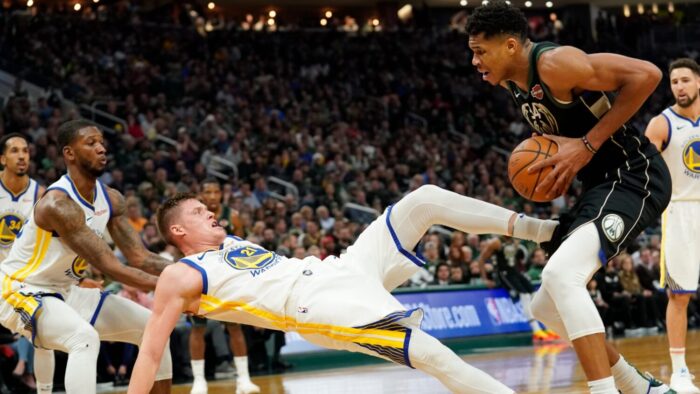
Source: jsonline.com
Charging fouls in the NBA are a crucial part of the game, occurring when an offensive player forcefully runs into a defender who has established a legal guarding position. These fouls promote fair play and protect defenders from unnecessary collisions, discouraging offensive players from exploiting their physicality for an unfair advantage.
When a charging foul is called, the offensive player is charged with a personal foul and the defending team gains possession of the ball. This can greatly impact the flow and outcome of the game, disrupting the offensive team’s momentum and potentially creating fast break opportunities for the defense.
The assessment of charging fouls is an important task for referees. They carefully observe the positioning of the defender and determine whether a legal guarding position has been established before contact is made. In certain situations, video review can also be used to review and confirm charging fouls.
Players must understand the rules regarding charging fouls and adjust their offensive strategies accordingly. They should aim to avoid initiating unnecessary contact and instead focus on employing skilled and tactical plays to score points for their team. Defenders, on the other hand, should position themselves appropriately and anticipate offensive moves to draw charging fouls and regain possession.
In the NBA, charging fouls serve as a means to promote fair play and safeguard defenders. They penalize offensive players for forcefully contacting defenders who have established a legal guarding position. Referees play a crucial role in assessing these fouls, and players should familiarize themselves with the rules to adapt their strategies accordingly.
Blocking Fouls
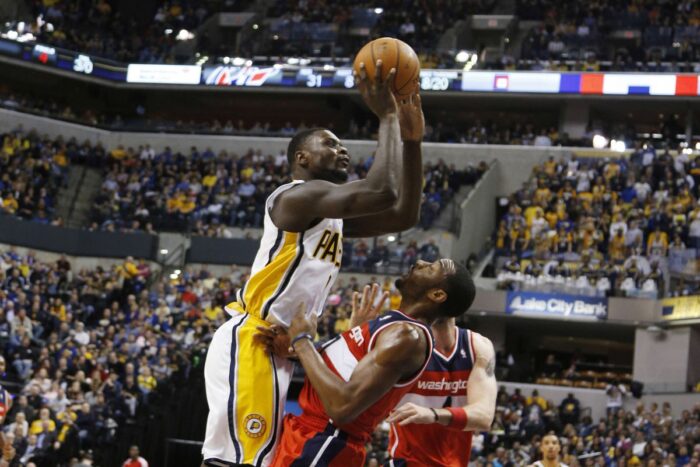
Source: sbnation.com
Blocking fouls are a common occurrence in NBA games. Here are some important points to consider regarding blocking fouls:
- Definition: Blocking fouls, also known as illegal blocking fouls, happen when a defensive player obstructs the progress of an offensive player who is either in the process of shooting or driving to the basket. It is called a blocking foul because the defensive player is blocking the offensive player’s path.
- Contact: In a situation involving a blocking foul, the defensive player is not in a legal guarding position and makes contact with the offensive player. This contact can occur as a result of poor positioning or failing to establish a position before the offensive player begins their shooting or driving motion.
- Foul Assessment: The referees are responsible for determining whether a blocking foul has taken place. They take into account various factors such as the defender’s position, the timing of the contact, and the actions of the offensive player. If the defender is still moving or not stationary at the moment of contact, it is more likely that a blocking foul will be called.
- Consequences: When a blocking foul is called, the offensive player is awarded free throws based on the specific situation. If the player was in the act of shooting, they may receive two or three free throws. If they were not shooting, the team is given possession of the ball.
- Defensive Success: Successfully executing a legal guarding position and establishing that position before the offensive player starts their movement can result in a defensive player drawing an offensive foul instead of a blocking foul. In this case, the offensive player is the one who initiates the contact.
- Challenges: Similar to other types of fouls, blocking fouls can be reviewed using video footage. However, only certain aspects of a blocking foul can be reviewed, such as the defender’s position or whether the offensive player was in control of their movements.
Understanding blocking fouls is crucial for both players and fans. It helps them comprehend the implications of contact and positioning during gameplay, ensuring that fair and informed decisions are made by the referees.
Holding Fouls
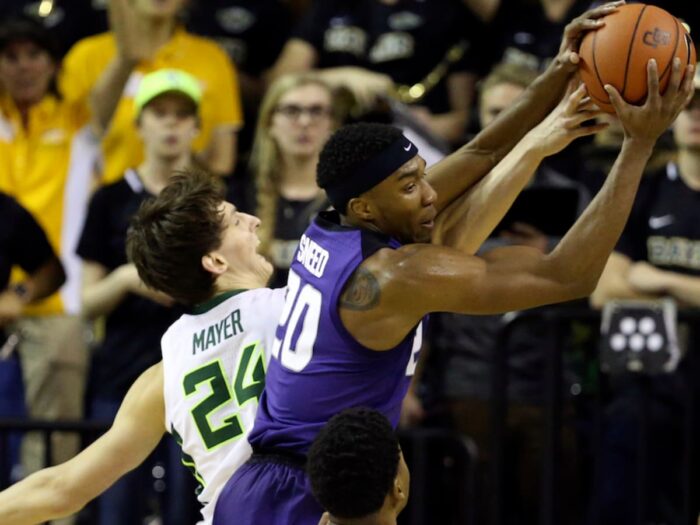
Source: si.com
When it comes to basketball, holding fouls can have a significant impact on the game. Here are some key aspects to consider regarding holding fouls:
- Holding fouls occur when a player grabs onto their opponent, preventing them from moving freely or obtaining a better position.
- They are considered personal fouls and result in the opposing team being awarded possession of the ball.
- Holding fouls can be committed in various situations, such as when a player is trying to establish position to receive a pass or when defending against an offensive player.
- Referees closely monitor holding fouls as they can impede the flow of the game and hinder fair competition.
- Players need to be aware of the rules regarding holding fouls to avoid unnecessary penalties and maintain a fair playing environment.
Fact: Holding fouls can be a strategic tactic employed by players to disrupt their opponents’ offensive plays. Referees are trained to recognize and penalize such actions to maintain fairness on the court.
Reach-in Fouls
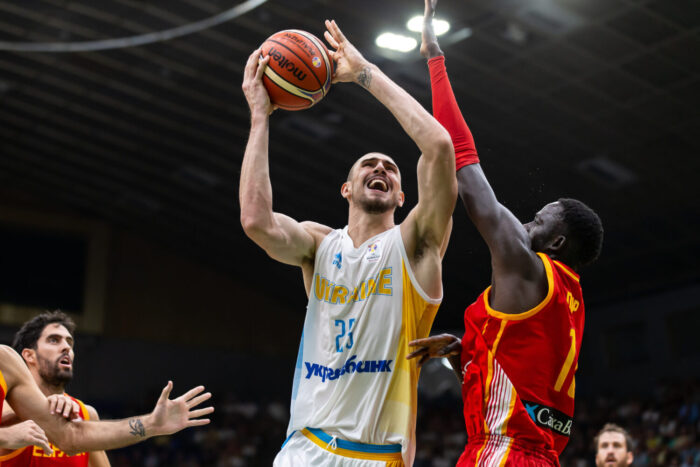
Source: thestadiumsguide.com
Reach-in fouls are one of the types of fouls that can occur in an NBA game. These fouls, known as reach-in fouls, involve a defensive player reaching in and making contact with the offensive player’s hand or arm while they are in possession of the ball. Reach-in fouls commonly occur when a defensive player tries to steal the ball from an offensive player.
Here are some key points to consider about reach-in fouls:
- Reach-in fouls, also referred to as reach-in fouls, are considered personal fouls and can result in the offensive player being awarded free throws or the team being awarded possession of the ball.
- Defensive players must be careful when attempting to steal the ball to avoid making contact with the offensive player’s hand or arm.
- The severity of reach-in fouls can vary. Sometimes, a slight touch may be called as a foul while other times, a more forceful contact may be required for a foul to be called.
- Reach-in fouls are often subjective and depend on the interpretation of the referees. What one referee may consider a foul, another referee may not.
- Players who consistently commit reach-in fouls may be at risk of getting into foul trouble and may need to adjust their defensive techniques.
Reach-in fouls can disrupt the flow of the game and can have an impact on the outcome. It is important for both defensive and offensive players to understand the rules surrounding these reach-in fouls to minimize their occurrence and maximize their effectiveness on the court.
Consequences of NBA Fouls
Players in the NBA often find themselves in situations where fouls can greatly impact the game. In this section, we will dive into the consequences of NBA fouls, exploring the effects they have on free throw opportunities, team fouls, and even player disqualification.
Get ready to uncover how these key aspects shape the strategies and outcomes of the game, revealing the fascinating dynamics behind the scenes of NBA action.
Free Throw Opportunities
When it comes to NBA fouls, understanding the concept of free-throw opportunities is crucial. Here are some key points to consider when it comes to free throw opportunities:
- Types of fouls: Free throw opportunities are typically awarded when a shooting foul or a shooting foul in the act of shooting occurs. These fouls involve contact with the player in possession of the ball, resulting in an advantage for the opposing team.
- Shooting fouls: These fouls occur when a defensive player makes contact with a shooter’s arms or body while attempting a shot. The player who was fouled is then awarded free throws, depending on the number of shots they were attempting.
- Number of free throws: The number of free throw opportunities awarded depends on the situation. If the shooter is fouled while attempting a two-point shot, they are awarded two free throws. If fouled while attempting a three-point shot, they are awarded three free throws.
- Bonus situations: In certain situations, free throw opportunities may be awarded even if a player is not in the act of shooting. When a team reaches a certain number of team fouls in a quarter, subsequent non-shooting fouls by the opposing team result in free throws for the fouled player.
- Importance of free throw accuracy: Free throw opportunities provide an excellent chance for teams to score points without any defensive pressure. Therefore, it is crucial for players to have strong free throw shooting skills to capitalize on these opportunities.
- Strategy: Teams can strategically use fouls to their advantage. By intentionally fouling weaker free throw shooters, they can prevent their opponents from scoring easily and potentially regain possession of the ball.
Understanding how free throw opportunities work in the NBA can significantly impact a team’s performance. It is essential for players to develop their free throw shooting skills and for teams to use fouls strategically to gain an advantage in the game.
It’s like a family dinner where everyone has to take turns fouling each other, except in the NBA it’s called a game.
Fouls and Team Fouls
- In the NBA, fouls play a significant role in the game and can greatly impact the outcome of a match.
- Team fouls refer to the total number of fouls a team commits during a specific period, typically a quarter or half.
- When a team exceeds a certain number of fouls, usually five or six, the opposing team enters the bonus or penalty situation.
- Being in the bonus means that the team that was fouled will automatically get free throw opportunities. Each subsequent foul will result in additional free throw attempts.
- Team fouls reset at the beginning of each period or half, so it’s crucial for teams to manage their fouls effectively.
- If a player commits too many personal fouls, typically five, they will be disqualified from the game and have to leave the court.
- Both personal fouls and team fouls can disrupt the flow and rhythm of a team’s gameplay, leading to strategic adjustments by both teams.
- Teams often need to balance playing aggressively on defense to create turnovers and contest shots while avoiding excessive fouls that give their opponents easy points.
- Coaches and players analyze the foul situation to make informed decisions about defensive strategies, substitutions, and overall game management.
- Foul trouble can impact individual players’ playing time and availability, as they need to be cautious not to accumulate too many fouls early in the game.
By understanding the dynamics of fouls and managing them effectively, teams can minimize their opponents’ scoring opportunities while maximizing their own chances to score and win the game.
Foul play can lead to early exits – player disqualifications mean the bench just got a little lonelier.
Player Disqualification
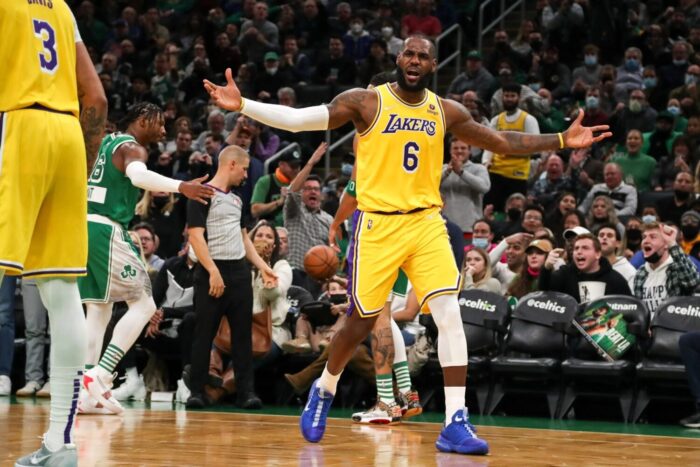
Source: maltasport.mt
Player Disqualification in the NBA refers to a situation where a player is removed from the game due to certain violations or accumulation of fouls. Here are some key points to understand about
- Personal Fouls: Players are allowed a maximum of six personal fouls in a game. Once a player reaches their sixth personal foul, they are disqualified and must leave the game. This is to ensure fair play and prevent players from excessively fouling opponents.
- Flagrant Fouls: A flagrant foul is a severe infraction that involves excessive contact or unsportsmanlike behavior. If a player commits a flagrant foul, they may be disqualified depending on the severity of the offense. The referee has the discretion to assess the penalty.
- Technical Fouls: Similar to flagrant fouls, technical fouls are given for unsportsmanlike conduct or disrespectful behavior towards officials, opponents, or teammates. Accumulating too many technical fouls can result in player disqualification.
- Consequences: When a player is disqualified, they must leave the game immediately. They cannot return to play unless there are specific circumstances, such as an overturned ruling by video review or a successful appeal against the disqualification.
It is important for players to exercise discipline and control their actions on the court to avoid player disqualification. The NBA aims to maintain a fair and competitive environment, and player disqualification serves as a deterrent for unsportsmanlike conduct or excessive fouls.
How NBA Fouls Are Reviewed and Assessed
When it comes to NBA fouls, understanding how they are reviewed and assessed is crucial. In this section, we’ll dive into the nitty-gritty of referee decisions, video reviews, and league disciplinary actions.
Get ready to uncover the inner workings of the NBA’s process for evaluating fouls. From the intricacies of officiating to the consequences faced by players and teams, we’ll explore it all. So, let’s lace up our sneakers and venture into the fascinating world of NBA foul assessments!
Referee Decisions
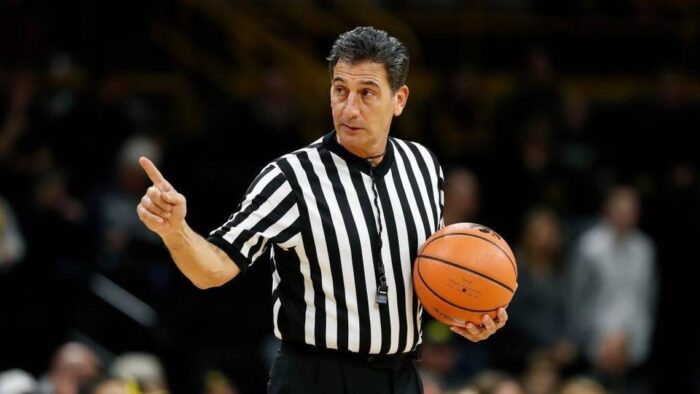
Source: aldeiadoparque.com.br
When it comes to NBA fouls, “referee decisions” naturally play a crucial role in determining the outcome of the game. Here are some key points to consider regarding “referee decisions” in NBA games:
- Assessing foul severity: “Referees” must assess the severity of each foul based on its impact and intent. Whether it’s a personal foul, shooting foul, technical foul, or flagrant foul, “referees” consider the circumstances and consequences before making a decision.
- Making split-second judgments: “Referees” need to make quick decisions in real-time, often in high-pressure situations. Their decisions are based on their knowledge of the rules and their understanding of game flow.
- Consistency in calls: “Referees” strive to maintain consistency in their decision-making throughout the game. They aim to treat all players equally and apply the rules consistently to ensure fair play.
- Communication with players and coaches: “Referees” play an important role in maintaining order on the court. They use effective communication skills to explain their decisions to players and coaches, helping to minimize confrontations.
- Overturning or confirming decisions: “Referee decisions” can be reviewed through various methods, including video review and consultation with other officials. This allows for the correction of mistakes and ensures fairness in the game.
- Impact on the game: “Referee decisions” can have significant consequences, such as awarding free throw opportunities to the opposing team or leading to player disqualification. It is important for “referees” to make accurate judgments to maintain the integrity of the game.
To enhance the effectiveness of “referee decisions” in NBA games, ongoing training and development programs are implemented. Utilizing advanced technology, such as instant replay systems, can further assist in ensuring the accuracy of calls. By consistently making fair and informed decisions, “referees” contribute to the overall quality and fairness of NBA games.
Video Review
When it comes to reviewing and assessing NBA fouls, video review plays a crucial role in ensuring the accuracy of referee decisions. It allows for a closer examination of fouls and helps in making fair and objective calls.
| Process | Description |
| Timeout Request | If a coach or team requests a timeout during a game, the referees have the option to review certain fouls during that timeout. |
| Critical Moments | In the last two minutes of regulation play and during overtime, the officials have the ability to review certain fouls to ensure accuracy in high-stakes situations. |
| Challenged Calls | Coaches have the opportunity to challenge certain calls via a coach’s challenge. If the challenge is successful, the foul is overturned. |
| Officiating Center | A team of referees at the NBA Officiating Center in Secaucus, New Jersey, assists in reviewing and making decisions on fouls using video replay technology. |
Video review provides a valuable tool for referees to make well-informed decisions and ensure fairness in the game. It allows for a closer examination of fouls, especially in critical moments, and helps in maintaining the integrity of the sport.
In a highly anticipated playoff game, with the score tied and only seconds remaining, a player was fouled while attempting a potential game-winning shot. The referee initially called a shooting foul, but the opposing team’s coach challenged the call. With the game on the line, the referees utilized video review to analyze the play from different angles.
After careful examination, they determined that the defender had indeed made contact with the shooter’s arm, warranting a shooting foul. The call was upheld, and the player went on to sink two clutch free throws, securing a victory for his team. This example showcases the significance of video review in making accurate fouls decisions, even in high-pressure situations.
League Disciplinary Actions
“The NBA has a system in place called league disciplinary actions to maintain the integrity of the game and ensure player safety. These actions serve as consequences for players who commit fouls that go beyond the boundaries of fair play. Here are some important details about the NBA’s league disciplinary actions:
- Fines: When players commit serious or deliberate fouls, they may be subject to monetary fines as a disciplinary measure. The amount of these fines can vary depending on the severity of the offense, ranging from a few thousand dollars to tens of thousands of dollars.
- Suspensions: In more severe cases, players may face suspensions, preventing them from participating in games. The length of these suspensions depends on the nature of the offense and the player’s disciplinary history, lasting from a few games to several months.
- Points System: Throughout the season, the NBA utilizes a points system to track players’ fouls. Each foul is assigned a specific number of points. When a player accumulates a certain number of points, they may face additional penalties, such as fines or suspensions.
- Player Review: The NBA has a dedicated team responsible for reviewing game footage and assessing player actions. This allows them to determine if disciplinary actions are necessary. These reviews ensure consistent enforcement of rules across all teams and games.
- Appeals Process: If players disagree with the disciplinary actions imposed on them, they have the option to appeal. The appeals process allows players to present their case and provide any necessary evidence to support their argument.
A real-life example of a league disciplinary action in the NBA took place during the 2019-2020 season. Dwight Howard of the Los Angeles Lakers was fined $35,000 for an obscene gesture towards a fan during a game. The league concluded that his action violated the NBA Code of Conduct, resulting in the fine.
It is vital for players to understand the consequences of their actions and uphold fair play in basketball. The NBA’s league disciplinary actions act as a deterrent and reminder of the significance of sportsmanship and respect both on and off the court.”
Some Facts About NBA Fouls Explained:
Frequently Asked Questions
What are the different types of fouls in the NBA?
In the NBA, there are three types of fouls: personal fouls, flagrant fouls, and technical fouls.
How many personal fouls can a player commit before being disqualified?
A player in the NBA can commit up to six personal fouls before being disqualified from playing in the game.
What happens when a team commits their fifth foul in a quarter?
When a team commits their fifth foul in a quarter, the opposing team will be awarded free throws as the team enters the bonus. Additional fouls after the fifth also result in bonus free throws for the opposing team.
What happens when a defensive foul occurs in basketball?
When a defensive foul occurs, the offensive player may be awarded two or three free throw attempts, depending on the field goal attempted. If the offensive player makes the shot during the illegal contact, the basket counts, and they receive one free throw attempt.
What happens when an offensive foul occurs in basketball?
When an offensive foul occurs, the offensive team loses possession of the ball.
What happens when a player fouls out in the NBA?
Once a player fouls out with six personal fouls, they can no longer play in the game but can still sit on the bench.
